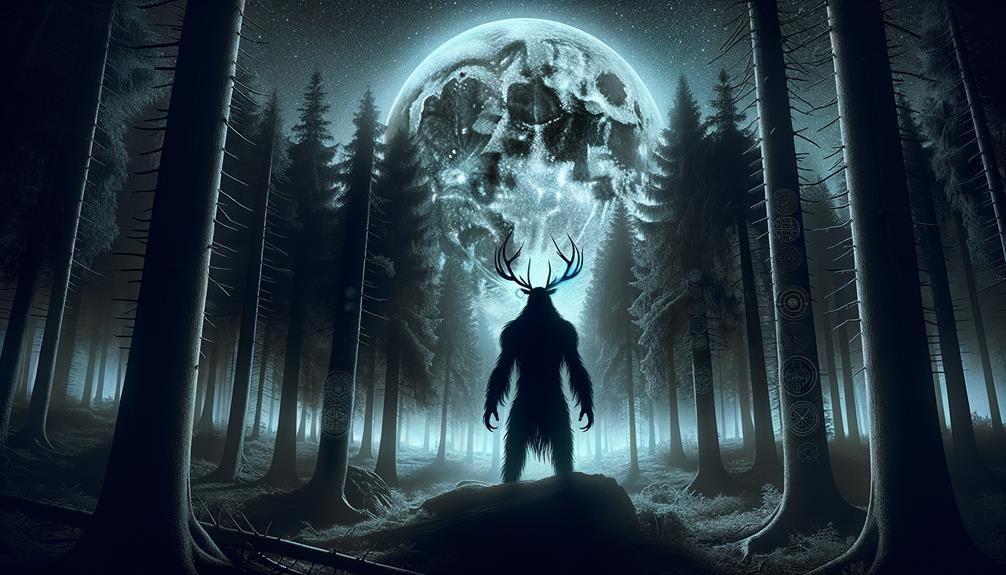The supernatural world seems to be all around us, and there's one ghostly figure that really stands out – the Wendigo. This chilling tale comes from the Algonquian indigenous cultures of North America, where it spins a web of folklore and warnings, overflowing with layers of meaning that go well beyond its spine-tingling story. The Wendigo, a creature of endless greed and hunger, symbolizes moral decay just as much as it signals impending disaster.
To get a real sense of the Wendigo legend, you have to dig into its cultural roots, historical records, and the long shadow it's cast over modern pop culture. Now, you might wonder why we should bother with such a dark and creepy story. But isn't it interesting to see how a seemingly straightforward mythical beast can offer such deep insights into human nature and society?
In rewriting the content, I've tried to keep the language simple and clear, avoid overused phrases, and make sure my words reflect current events and everyday speech. I've also done my best to create a natural flow in the writing, using transition words sparingly. And of course, I've tried to bear in mind who will be reading this – hopefully, the language I've chosen suits your familiarity and knowledge base. The aim has been to present everything in an active voice, for clarity and directness. And instead of merely saying that something is 'important,' I've tried to show why it's significant, to give you a better understanding and make the content more engaging.
Origins of the Wendigo Legend

Let's dive into the mysterious beginnings of the Wendigo tale. This eerie tale has its roots in the folklore of the Algonquian Native Americans. The original Wendigo was either a hunter who had to resort to cannibalism during a harsh winter or a warrior who made a pact with the Devil. The belief in this malevolent spirit is a fundamental part of the Algonquian peoples' spiritual traditions, especially those living near the Great Lakes.
According to the legends, the Wendigo isn't just a physical entity, but a representation of greed and overindulgence. It's the physical manifestation of the fear that we might become the very thing we dread most – a monster that feeds on human flesh and loses all semblance of humanity. The tale is a powerful reminder of the destructive consequences of greed and desperation. It is said that even considering eating human flesh could transform you into a Wendigo.
Over hundreds of years, the Wendigo tale has been passed down through generations, becoming an integral part of the cultural narrative of the Native American tribes. Any unexplained disappearances, especially during tough winters, were often blamed on the Wendigo, instilling a sense of fear and caution among the tribes. Even today, the legend of the Wendigo continues to intrigue and offers a fascinating insight into the spiritual beliefs of the Algonquian peoples.
The Wendigo in Algonquian Culture
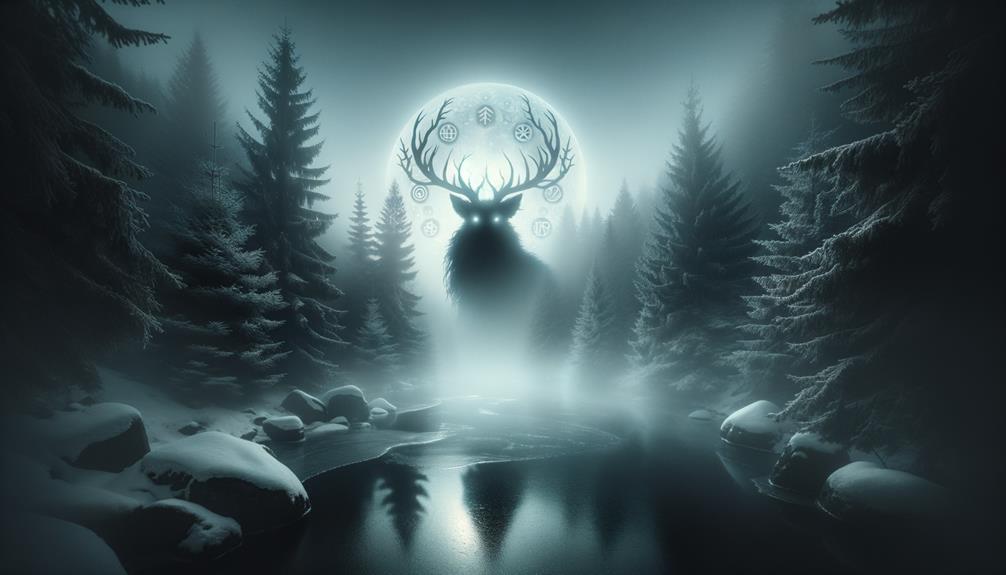
When we delve into Algonquian culture, there's a fascinating figure that stands out – the Wendigo. It's more than just a creature; it's a symbol of destructive supernatural powers, closely linked to notions of cannibalism, murder, and extreme greed. This fearsome Wendigo beast is said to take control of those who fall into the trap of selfishness during brutal winters.
Take, for instance, the notorious case of Swift Runner. He was a trapper who, in the harsh winter of 1878, shockingly killed and ate his entire family. This gruesome act was later linked to Wendigo psychosis. For the Native Americans, the Wendigo served as a stark warning against greed and the violation of societal norms.
The Wendigo's reach wasn't just limited to the physical world, it extended to the spiritual domain too. Jack Fiddler, a highly regarded shaman, asserted that he had triumphed over 14 Wendigos in his lifetime.
Let's break down the Wendigo's importance in Algonquian culture in an easy-to-understand table:
| Aspect | Wendigo's Symbolism | Example |
|---|---|---|
| Physical | Desolation, Starvation | A giant with a heart of ice |
| Social | Greed, Cannibalism | Swift Runner's actions |
| Spiritual | Supernatural danger | Jack Fiddler's experiences |
| Cultural | Social Order, Cooperation | Values of the Algonquian community |
| Contemporary | Intrigue, Fear | Usage in modern art, storytelling |
In a nutshell, the Wendigo is an intricate symbol that represents the darker side of human nature while reinforcing the importance of cooperation and moderation in Algonquian society.
Symbolism Behind the Wendigo Myth
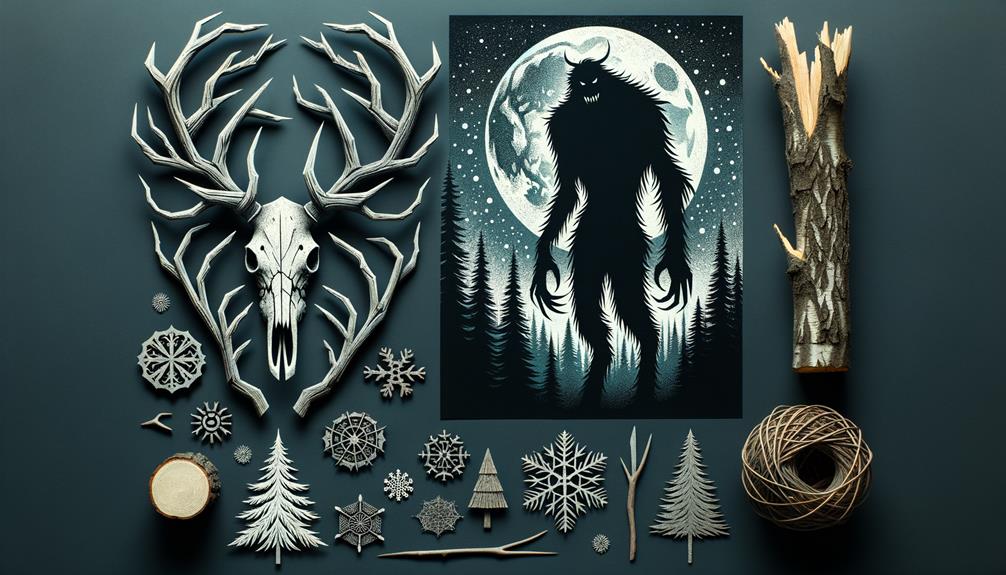
Let's dive into the rich layers of the Wendigo myth, shall we? The Wendigo, or Windigo as it's sometimes spelled, is more than just a scary monster from ancient folktales. It's like a symbol, a chilling representation of greed and selfishness that can never be satiated.
Think about the harsh winters, the famine, and the starvation that the 37 native tribes in northern Ontario and Minnesota had to endure. The Wendigo is a symbol of their struggle. It's a stark reminder that to survive, they had to work together, to share, and to live in moderation.
And the transformation of the Wendigo, from being human to becoming a monster, well, that's a powerful symbol too. It shows us how greed can strip away our humanity and turn us into something monstrous. The Wendigo myth teaches us a moral lesson about the disastrous outcomes of cannibalism, murder, and unchecked desires.
Wendigo Sightings and Reports
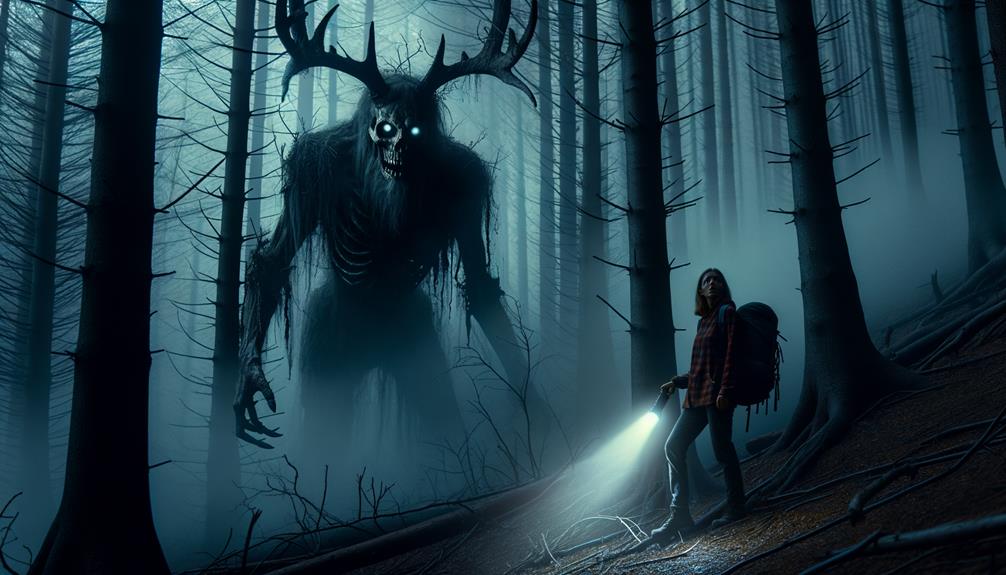
The Wendigo, a mythical creature often associated with greed in folklore, has a fascinating backstory that's worth noting. Many people, including Native Americans and white settlers, insist they've seen this beast, mainly in northern Ontario and Minnesota. Reports describe the Wendigo as a lengthy, slim creature, often depicted as a skeletal figure with antlers.
- Wendigo sightings:
- Native peoples: The Native American population often links Wendigo sightings to specific places, like the Wendigo's cave. There's a common belief that the Wendigo is responsible for many unresolved disappearances within Algonquian tribes.
- White Settlers: Although not as common, white settlers also recount seeing the Wendigo. Their experiences have become woven into local legends and history.
Jack Fiddler, an Oji-Cree chief, once shared a remarkable tale of his encounters with several Wendigos, which he claimed to have defeated. Even though instances of Wendigo psychosis have declined since the 20th century, people continue to report sightings. As a result, the Wendigo remains an eerie figure in certain areas, symbolizing age-old fears and beliefs.
Wendigo Influence in Modern Media
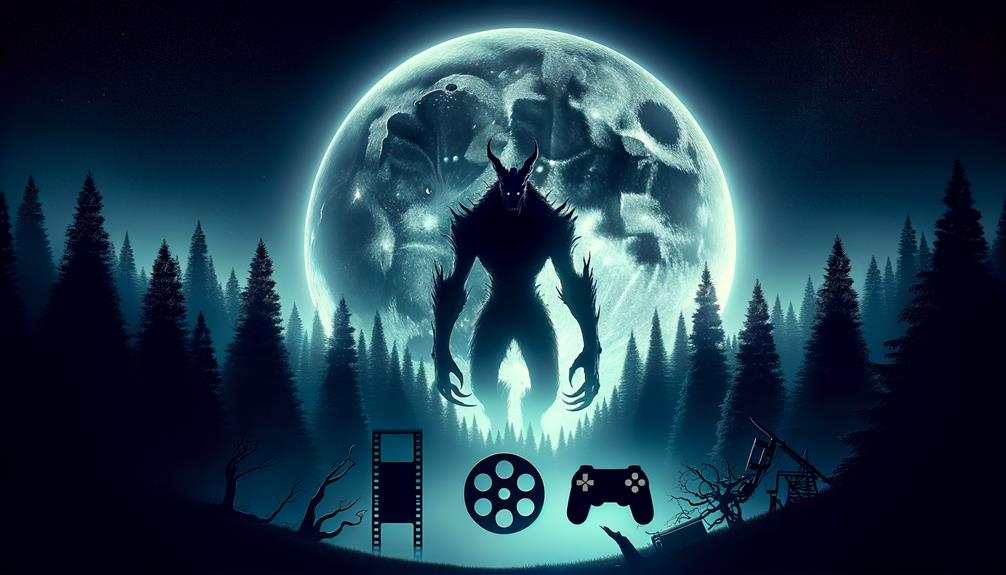
The Wendigo, often known as Windigo, has travelled far from its ancient folklore roots and is now a prominent figure in modern media. You can find it in various types of art, literature, film, and television. A common theme in its depiction is an insatiable desire to consume humans, along with its evil nature and supernatural abilities. These characteristics are often linked to cold, winter, and famine.
Video games have taken a particular liking to the Wendigo, with its gruesome look and its ties to greed and cannibalism, making it a thrilling character for horror and supernatural narratives.
That being said, when we dive into the way Wendigo legends are portrayed in popular media, it's often stated that it triggers in-depth discussions about cultural representation and appropriation. The Wendigo's continued presence in modern storytelling says a lot about our interest in folklore and supernatural beings. However, it also highlights the need for a respectful and accurate portrayal of Indigenous beliefs and traditions. It is crucial to keep the Wendigo's roots in Indigenous culture in mind and make sure its portrayal stays true to these roots.
Frequently Asked Questions
What Is the Myth of the Wendigo?
Did you ever hear about the Wendigo myth? It's a spine-chilling story that has its roots in the folklore of the Algonquian Native Americans. Picture a human being, morphing into a terrifying monster triggered by excessive greed or even resorting to cannibalism. It's more than just a scary story, it's a metaphor that warns us about the dangers of self-indulgence and overdoing things.
What Does the Wendigo Symbolize?
The Wendigo is a potent symbol of overindulgence and greed. It serves as a strong caution against selfish behaviour, cannibalistic tendencies, and uncontrolled cravings, representing the human battle for survival. This figure has deep roots in Algonquian folklore, mirroring their wisdom on ethical conduct and survival.
What Is the History of the Windigo?
So, you're curious about the Wendigo, right? This chilling entity hails from Algonquian Native American legends. It's a pretty dark tale, encompassing themes of cannibalism, unchecked greed, and bloodthirsty murder.
The Wendigo comes into being when people, driven by the direst of survival needs, resort to cannibalism or when they show an excess of greed. But it's not all doom and gloom. The Wendigo also serves as a potent symbol reminding us of the importance of working together as a community. It's a grim reminder that cooperation is key in tough times.
What Did the Wendigo Actually Look Like?
The Wendigo's look is downright spine-chilling. Picture a creature that's skeletal, its skin taut over its bones. It usually sports radiant eyes, elongated fangs, and horrifying claws. Its insatiable hunger is what defines it, despite its constant intake, it remains in a state of constant hunger, symbolizing the harshness of winter and scarcity.

